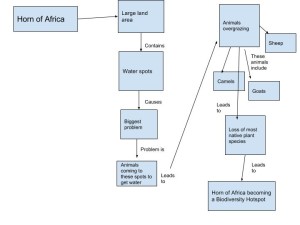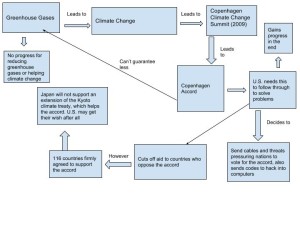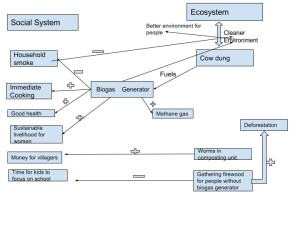Assignment Instructions:
1)Use the following website to pick one of the biodiversity hotspots. After you pick a hotspot, in 100-200 words describe why it’s considered a biodiversity hotspot. Include in your explanation the threats to the hotspot. Website: http://www.cepf.net/resources/hotspots/Pages/default.aspx
2) Using the same website, pick a different location with a biodiversity hotspot that contains IUCN protected area categories. In 100- 200 words describe which category or categories of the protected areas (using the categories discussed in this module) the hotspot you picked falls into and why it falls under that protected area.
3) Create a systems diagram by picking one of the threats to biodiversity found from one of the biodiversity hotspots you researched. In the diagram show the components that contribute to that threat, and how it is linked to the biodiversity the threat causes. Create at least 5 components. Write a brief explanation of your diagram.
1) I chose to look at a biodiversity hotspot located in the Horn of Africa in Northeast Africa. The Horn of Africa is a biodiversity hotspot for many reasons. One reason is because it has lost 95% of it’s original habitat. The hotspot covers a large area of land, but that land only contains a small amount of it’s native plant life. There are 2,750 species of endemic plants, which exceeds the 1,500 limit an area can have before becoming a hotspot. Another reason it is considered a biodiversity hotspot is because of the habitat loss due to the human population causing problems such as charcoal harvesting, production of medicine, and a lack of stable governmental control. The biggest problem of all is overgrazing, as almost all of the land is used for grazing.
2) The next biodiversity hotspot I chose is the Atlantic Forest that lies along the Atlantic Coast of Brazil and runs into other countries such as Argentina. Areas are becoming protected to prevent species extinction and further damage from urbanization. Specifically 224 areas are under protection under category 1,2, and 3. The Atlantic Forest has first become a category 1 protected area as a strict nature reserve to prevent any future extractive use of the land like those that occurred in the past. One example of a previous extractive use was early settlers who removed large amounts of timber from the forest. Next, it falls under a category 2 protected area for the protection of the species living in the 108 national and state parks. It was not stated on the website why some of the areas are categorized as category 3, which is the protection of natural monuments.
3) To create this diagram I picked the overgrazing threat in the Horn of Africa. My diagram shows why the overgrazing in certain spots occurs, what animals do the overgrazing, and how it leads to making the Horn of Africa a biodiversity hotspot.
Resources:
CEPF. “Horn of Africa.” PROTECTING NATURE’S HOTSPOTS FOR PEOPLE AND PROSPERITY. N.p., 2016. Web. <http://www.cepf.net/resources/hotspots/africa/Pages/Horn-of-Africa.aspx>
CEPF. “Atlantic Forest.” PROTECTING NATURE’S HOTSPOTS FOR PEOPLE AND PROSPERITY. N.p., 2016. Web. <http://www.cepf.net/resources/hotspots/South-America/Pages/Atlantic-Forest.aspx>




